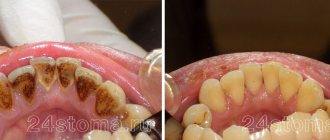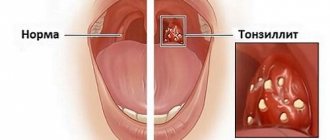Take the first step
make an appointment with a doctor!
Pregnancy is a happy time in the life of every woman, but, unfortunately, it is often overshadowed by various diseases. These include hepatosis in pregnant women, the symptoms of which most often begin to appear in the third trimester. Just a few years ago, this disease was very rare in medical practice; only one out of 16,000 expectant mothers suffered from it. But recently, an increasing number of pregnant women are faced with this unpleasant disease. Hepatosis in pregnant women is a degenerative liver lesion, manifested in impaired bile formation and bile flow.
Causes of hepatosis in pregnant women
Doctors turned their attention to this disease relatively recently, so experts are still arguing about what causes its appearance. Most medical minds agree that hepatosis in pregnant women is caused by certain genetic characteristics or disorders and can be transmitted through the female line. These genetic abnormalities may not manifest themselves in any way throughout life. But sometimes pregnancy, which brings with it an increase in body weight, hormonal imbalances and an increased load on the body in general and on the liver in particular, gives impetus to the development of hepatosis. The liver is also very susceptible to the influence of pregnancy hormones. For example, estrogen.
The main factors that increase the risk of this disease include:
- Incorrect intake of vitamins. Vitamins are always an additional burden on the liver. Many vitamin complexes contain increased amounts of various components, which cause liver dysfunction, so they need to be taken correctly, taking into account age, body weight, dosage and stage of pregnancy.
- Dietary disorder. Overeating and eating salty, fried, smoked, fatty foods, as well as foods rich in chemical additives, overload the liver and impair its functioning.
- Insufficient physical activity. If the expectant mother moves little, then little energy obtained from food is consumed, and the metabolism, which is already slowed down by pregnancy, slows down.
Take the first step
make an appointment with a doctor!
When to worry
If there is a thin layer of whitish coating on the tongue, but the pregnant body feels well, no accompanying abnormalities are observed, the period of bearing the baby is not complicated in any way, there is no need to worry. If a dense white plaque is visualized, which is accompanied by an unpleasant odor or even pain or discomfort, this indicates a fungal infection of the oral cavity - candidiasis. Also, a dense white coating can appear as a result of insufficient hygiene measures, caries, and gingivitis. In such situations, visiting a doctor is a necessity.
Diagnosis of hepatosis and its signs
Hepatosis in pregnant women is a disease that is sometimes very difficult to diagnose. By this time, the uterus already occupies the entire abdominal cavity, which makes palpation of the liver impossible. This disease is often confused with gallstone disease, because their symptoms are very similar. The most common signs of hepatosis include:
- skin itching;
- yellowing of the skin and whites of the eyes, the appearance of vascular networks on the face and hands, redness of the palms (they seem to be covered with red spots from the inside);
- nausea, vomiting, abdominal discomfort, bitterness in the mouth, stool disorders, loss of appetite;
- pain in the right hypochondrium;
- lightening of stool and darkening of urine (from orange to dark brown);
When the bile duct is disrupted, a large amount of bile accumulates in the liver. Unable to escape, bile begins to break through into the lymphatic system, and from there into the general bloodstream. If you conduct a blood test, it will show an increase in the level of transaminases, alkaline phosphatase, bilirubin and cholesterol, a decrease in hemoglobin, as well as red blood cells and platelets. A urine test will reveal the presence of bile acids and increased secretion of urobilin.
When bile enters the bloodstream, it causes itching, which intensifies in the evening and at night. Most often, pregnant women with this disease consult a doctor with complaints of an acute and irresistible desire to scratch. It drives you crazy, disrupts sleep, leads to fatigue and irritation. As a rule, the arms, legs and stomach itch the most. Filling the liver with bile causes overstretching of its capsule, the surface of which has a large number of pain receptors. This causes constant dull pain in the right side.
If hepatosis is suspected, the doctor at the antenatal clinic should carefully examine the patient, try to palpate the liver area, prescribe extensive blood and urine tests, as well as an ultrasound examination of the liver, gall bladder and neighboring organs.
Brown coating on the tongue: causes and treatment
Corfe and cigarettes can cause a brown coating on the tongue
IMPORTANT: You should know that strong tea drinkers, coffee lovers and heavy smokers often have brown tongue pigmentation and a yellow tint to tooth enamel.
A brown coating of the tongue usually accompanies the following pathologies:
- diseases of the liver and biliary tract
- diabetic coma
- pellagra (vitaminosis associated with a lack of vitamin PP)
- dehydration in severe intoxication and poisoning
- the use of certain medications: Iodinol, Faringosept, Tetracycline hydrochloride, B vitamins, Lugol's solution, etc.
If the plaque does not cause concern and goes away on its own after some time, there is no need to worry. If you have accompanying symptoms that cause discomfort, you should consult a doctor.
Painful attacks during hepatosis
In the most difficult cases of hepatosis, the patient sometimes experiences attacks characterized by severe pain in the right hypochondrium. Often the pain is felt in the abdomen, at the level of the navel and is mistaken for an exacerbation of gastritis. Such attacks may be accompanied by continuous and painful vomiting without relief, headache, tinnitus, rapid heartbeat, darkening of the eyes and shortness of breath. They are very similar to severe poisoning syndrome, only in this case the stool practically does not change, and the food eaten is vomited.
Most often, such attacks are caused by eating harmful foods (fried, spicy, fatty, alcohol) and begin 40-60 minutes after eating or by a sudden movement, for example, a quick turn, bend or fall. Painful attacks can last up to 20-40 minutes, they begin suddenly and recede just as sharply. Often after an attack, quite severe residual pain remains in the right hypochondrium for several days. A big mistake during such attacks is taking paracetamol, because it only aggravates the situation, negatively affecting liver activity. It is allowed to take antispasmodic drugs such as No-Shpa.
Take the first step
make an appointment with a doctor!
Orange coating on the tongue: causes and treatment
Fruits and vegetables with orange pigment may cause a coating on the tongue
- Orange bloom is often caused by fruits and vegetables that are rich in carotene and brightly colored. Fans of raw carrots and carrot juice, persimmons, apricots, and pumpkins can observe the coloring of the papillae of the tongue with an orange pigment, which fades over time.
- Some medications can also form an orange coating, which disappears after the end of the medication course.
- A reason to pay attention to your health is an orange coating on the tongue that cannot be removed with a brush or scraper. A change in the color of the tongue may be due to the reflux of gastric juice into the oral cavity. And this could be the beginning of gastroenterological diseases: gastritis, reflux esophagitis, etc. In this case, you should reconsider your diet and, if necessary, undergo an examination.
The danger of hepatosis during pregnancy
The affected liver is not able to cleanse the body of harmful substances, which leads to intoxication of the mother and a deterioration in her well-being. Surprisingly, from the very first day after birth, the disease begins to quickly recede and soon leaves no trace behind. After 1-2 weeks, blood counts return to normal. Even if hepatosis recurs in several pregnancies in a row, it does not make any visible changes in the woman’s liver. However, this does not mean that this disease is harmless. It disrupts the metabolism between mother and fetus, thereby adversely affecting the child. It has been proven that hepatosis increases the likelihood of perinatal mortality by 5%, and in 35% of pregnancies occurring against the background of this disease, hypoxia, prematurity and delay in fetal development were observed.
Plaque on the tongue for sore throat and sore throat: treatment
A pale and dry tongue indicates a throat disease.
A yellow-white tongue indicates a disease of the throat and nasal cavity due to a viral or microbial infection. Doctors diagnose ARVI based on the following symptoms:
- chills and fever
- nasal congestion
- a sore throat
- headache and muscle pain
- "coated tongue
A thick white-yellow coating on the entire surface of the tongue with the above symptoms is a sure sign of a cold of infectious origin. A large number of bacteria accumulate on the tongue, forming a dense layer.
At the initial signs of the disease you should:
- take a hot shower or steam your feet (if you don’t have a fever)
- drink plenty of herbal teas with raspberries, lemon, honey and raspberries
- gargle with disinfectant solutions and herbal infusions
- for nasal congestion - use vasoconstrictors
To prevent colds, you should practice prevention of colds and strengthen your immune system:
- rinse the nasal passages with isotonic sodium chloride solution
- apply a contrast shower
- exercise outdoors
Protracted infections with complications associated with the appearance of a dry cough and high fever require treatment with antibiotic and antiviral drugs.
Types of tonsillitis (tonsillitis)
- Sore throat is a serious infectious disease associated with damage to the tonsils by various pathogens. The disease is severe and is accompanied by high fever and severe sore throat.
- Sore throat is characterized by a dense gray-white coating on the tongue with bright red tonsils. In some cases, ulcers or a solid white necrotic coating can be observed. It is important for a doctor to correctly diagnose the disease and differentiate it from ARVI or influenza.
- Depending on the type of sore throat, treatment with antibiotic, antifungal or antiviral drugs is prescribed. Local influence on the source of inflammation, proper oral hygiene, a gentle diet and plenty of warm drinks lead to recovery.
- Untreated sore throat can become chronic and have serious consequences in the form of heart disease, kidney disease and rheumatic complications.
Treatment of hepatosis in pregnant women
Treatment of hepatosis is complicated by the fact that almost all medications are contraindicated for pregnant women. Many medications can cause hypoxia and intrauterine growth retardation in the fetus, so the doctor must conduct a full examination of the patient and make sure the diagnosis is correct before deciding on a treatment method. It is very important to understand at what stage the disease is. In the mild stage, you can do without drug intervention by using a special diet. The expectant mother should exclude all heavy, fatty and high-calorie foods from her diet, and also stop taking vitamin complexes and other medications (if their withdrawal does not harm the pregnancy). Drugs designed to optimize liver function are also often prescribed (Hofitol, Essentiale Forte N and others). In many cases, diet is enough to remove toxins from the body and improve the patient's condition.
In more severe stages, the woman is sent to a hospital, where the issue of early delivery is decided. If there is no danger to the fetus, then labor can be delayed by purifying the blood using IVs. They are combined with taking large doses of the above-mentioned drugs and a strict diet. If this technique makes it possible to suppress the disease or at least keep it at the same level of development, and the condition of the fetus does not cause concern, then treatment is continued until 37-38 weeks, and childbirth is planned for this period. If the method does not give the desired result (or if the condition of the fetus worsens, hypoxia is clearly visible), consent to induced labor or Caesarean section is urgently signed. Often the child has a defensive reaction to the unfavorable situation created, and premature birth spontaneously begins. However, you should not rely only on nature. If serious indications arise, it is recommended to start the labor process in advance to minimize the risk of complications.
It is very important that a pregnant woman with severe hepatosis is under constant medical supervision. It is also necessary to carry out extensive blood tests every two days. It often happens that under the influence of IVs, blood counts suddenly drop significantly. Having decided that the disease has subsided, the doctor discharges the patient, and after a couple of days she is again admitted to the hospital with a sharp increase in transaminases.
Take the first step
make an appointment with a doctor!
White coating on the tongue in adults and children: causes and treatment
Projection of organs on the tongue
- In a healthy person, the tongue is pink with a slightly whitish tint. The color of the tongue depends on the condition of the filiform papillae of the organ. These are the most numerous papillae that run along the walls and edge of the tongue.
- The body of the papilla is covered with a large layer of squamous epithelium, capable of keratinization. When the epithelium is exfoliated, the keratinized cell remains have a whitish tint, so the tongue has a pink-white color.
- If the digestion process fails for any reason, the epithelium in the form of a stratum corneum lingers on the tongue. Upon visual examination, the tongue becomes white due to plaque in the form of a layer of keratinized epithelium. There is a so-called “coated tongue”.
- Frequent illnesses from viral and microbial infections occur due to low immune status. Young children are especially susceptible to infectious diseases. They have thick white deposits on their tongue. Strengthening the immune system using vitamin complexes and immunostimulants increases the body's resistance to colds.
Prevention of hepatosis in pregnant women
Although hepatosis is considered the result of certain genetic characteristics, there are a number of recommendations to avoid it or delay its appearance for a longer period:
- Dieting. If you have a tendency to overload the liver, then you must completely avoid everything fried, fatty, smoked, salty, spicy and sour. The diet should consist of fruits, vegetables (except potatoes, legumes, onions and garlic), low-fat dairy products, chicken breast meat, and low-fat fish. You should not eat chocolate and other cocoa-containing products, egg yolks, cheese, pastries (1-2 pieces of black bread per day are allowed).
- Physical activity. Movement is life, so you need to move more. This speeds up metabolic processes in the body, eliminates congestion, and facilitates the functioning of the liver.
- Refusal of oral hormonal contraceptives and antibacterial agents. They can cause great harm to the liver.
- Take vitamins carefully or avoid them. If possible, you should try to get all the substances the body needs from food, and not from vitamin complexes.
- Treatment of chronic gastrointestinal diseases.
- The use of hepatoprotectors and choleretic drugs. If pregnancy is not planned yet, then it is enough to carry out preventive courses with these drugs, and if pregnancy has already occurred, then they must be taken according to a special schedule agreed with the attending physician.
Hepatosis in pregnant women is a very insidious disease. If you suspect you have signs of it, be sure to tell your doctor so that he can order a blood test and make or rule out a diagnosis.
Black coating on the tongue: causes and treatment
Black tongue
A thick black coating on the tongue often indicates serious disorders in the body. The presence of such a plaque that does not go away for a long time gives reason to see a doctor and have your health examined. Many problems in the body can lead to a black coating of the tongue.
- Shift in acid-base balance towards acidification. Acidosis of the body can occur with an unbalanced diet, fasting, intestinal disorders, and fever.
- A chromogenic fungus that has settled in the oral cavity can cause black deposits on the tongue and black-green spots on tooth enamel.
- Slagging of the body due to the abuse of “unhealthy” food.
- Long-term viral and microbial infections .
- Crohn's disease is a genetic disease that affects the gastrointestinal tract.
- Problems with the biliary tract and liver .
- Oncological diseases.
Making an accurate diagnosis, treatment and following the doctor’s recommendations will help solve the problem with black deposits.
IMPORTANT: It should be remembered that some medications and products can turn the tongue black: activated carbon, blackberries, blueberries, blueberries, bird cherry, mulberry. This type of plaque usually disappears on its own and does not pose a threat.
Plaque on the tongue with pancreatitis, gastritis: causes and treatment
Diet for gastrointestinal diseases is an important stage in recovery.
An abundant white coating with a yellow tint on the tongue can serve as a “beacon” for the appearance of functional digestive disorders and even indicate diseases such as gastritis and pancreatitis . Gastritis most often occurs due to poor diet, violation of food intake, and consumption of “unhealthy” foods. A thick white coating on the tongue is often accompanied by:
- heaviness in the stomach
- pain in the epigastric region
- unpleasant odor from the mouth
- heartburn
- nausea
Inflammation of the pancreas or pancreatitis occurs when the enzymes of the pancreas, due to the inflammatory process, are not released into the duodenum, but have a “destructive” effect in the pancreas itself.
The process of self-digestion occurs. Toxins and digestive elements can enter the bloodstream and disrupt the functioning of important organs: heart, lungs, liver, brain.
Examination of the patient
Pancreatitis is a serious disease; its acute form requires hospital treatment. The initial forms of the disease can be identified by a persistent white-yellow coating on the tongue with accompanying symptoms:
- pain in the upper abdomen
- vomiting mixed with bile
In diseases of the digestive system, the motility of the intestinal tract is impaired. In order to somehow help the intestines cope with food, the number of villi on its walls for processing food increases.
Papillae also grow on the surface of the tongue, which over time thicken and become clogged with waste products of bacteria. This is how the tongue becomes overgrown with a large layer of white-yellow coating.
IMPORTANT: If you experience periodic pain and discomfort in the stomach area, you should seek help from a gastroenterologist.
The following recommendations will help you get rid of functional disorders of the gastrointestinal tract, gastritis, pancreatitis, and therefore abundant white-yellow coating on the tongue:
- It is necessary to reconsider your daily routine and analyze your food intake and quality.
- You should eat in small portions every 4 hours.
- It is recommended to exclude “harmful” foods from the diet: fatty, canned, smoked, fried and spicy, fresh baked goods, sweet carbonated water.
- Avoid eating in a hurry.
- Chew food thoroughly.
- Do not eat too hot or cold food.











